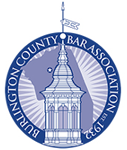Overexertion injuries and falls are types of workplace injuries that are usually covered under workers’ compensation. Even though workplaces have gotten safer over the last two decades, the costs associated with workplace injuries have increased, even when adjusting for inflation. Overexertion injuries and incidents involving falls account for nearly half of all workplace injuries.
Liberty Mutual Holding Co. Inc. produced its 2020 Workplace Safety Index that outlines trends based on injuries and illnesses reported in 2017, the most recent data available. The injuries and illnesses highlighted in the report resulted in more than five days of lost work. Overexertion injuries top the list of most common workplace injuries, followed by accidental, same-level falls. The index records same-level falls apart from separate-level falls.
Overexertion Injuries
Overexertion injuries result from an employee pushing themselves beyond the physical limit of their body. These injuries affect the body’s soft tissue, muscles, nerves, tendons, and ligaments, as well as the joints, cartilage, spinal discs, and blood vessels. Overexertion injuries may occur when lifting, pushing, pulling, turning, holding, carrying, throwing, or reaching for an object. These injuries may involve intense use of force and result from repetitive motion.
Sometimes an overexertion injury is caused simply by the ergonomics of body positioning while working for extended periods of time, which can include standing or sitting awkwardly or remaining in the same position for too long. The work environment may be a factor as well, as exposure to powerful vibrations or extreme temperatures can also cause overexertion injuries. The health consequences range from discomfort to more serious issues, such as tendonitis and chronic pain. Some overexertion injuries can be debilitating.
The Bureau of Labor Statistics (BLS) mentions overexertion injuries as one of the top causes of non-fatal, work-related injuries. These injuries are broken down into non-impact injuries and repetitive motion injuries. The non-impact injuries were caused by excessive force while lifting, pushing, etc. The repetitive motion subsection involved microtasks that caused stress or strain injuries that did not entail excessive effort.
The BLS reports that overexertion and bodily reaction injuries occur at a rate of 28.2 per 10,000 full-time workers. Workers between the ages of 45 to 64 are most at-risk for these types of injuries, which most often occur in the transportation and warehousing industries. These injuries most frequently affect the back more than any other body part and cause an average of 12 days of lost work.
Same-Level Falls
The Liberty Mutual report labels same-level falls as the second most common workplace injury. This includes slip and falls but distinguishes this category from falls that involve a person falling from one level down to another, such as falls from scaffolding or another structure. The index states that same-level falls make up 18.2 percent of reported on-the-job injuries.
The BLS work-injury report breaks down several types of workplace falls, including slips and trips without falling, falling from the same level, falling to a lower level, and voluntary jumping to a lower level. These falls incur an injury rate of 23.9 per 10,000 full-time workers. Workers aged 55 and over are at the greatest risk for these injuries, which often involve sprains, strains, or tears, and are most common in the transportation, warehousing, and agriculture industries. Workers who suffer injuries from falls typically miss 12 days of work.
Costs to Employers
Workers’ compensation insurance generally pays for medical bills that result from the treatment for the injury, as well as lost wages and other benefits for the injured employee. However, there are other costs the employer must bear in the wake of a workplace accident. Productivity suffers when a trained and competent employee is unable to work, as well as quality of the work. Even if the injured employee is replaced by a temporary worker, the employer must use time and resources to find and train the substitute.
Implications for Employees
An employee injured on the job may have the comfort of knowing their employer has workers’ compensation insurance, but there are no guarantees that the program will take care of all their needs. An injured employee may have issues beyond the physical results of the incident. Emotional and psychological scars may exist long after bodily injuries have healed. Financial consequences may also endure, especially if the worker requires an extended recovery period or is permanently unable to return to work after the accident. The worker may require education or job training to move on to a different field of work, or they may become totally disabled. These and other issues should be addressed before a settlement is reached.
Employer Prevention is Key
Employers should utilize facility design to maximize workplace safety. With proper implementation of preventative measures, employers can keep employees safe while also protecting their bottom line. To prevent overexertion injuries, employers should invest in ergonomics designed to protect employees who complete physical work. Workplace design initiatives to mitigate safety traps, such as slippery floors or walkway obstacles, can be useful in preventing slip and falls. Providing employee training to avoid injuries is another injury-prevention tool. Employers in certain physical industries, particularly those in construction, manufacturing, retail, transportation, and warehousing, should be proactive in providing safe tools and technique training to protect employees from work injuries.
Employee Protection and Risk-Mitigation Practices
While not all accidents can be prevented, employees who work in physical jobs can take some precautions to aid in accident avoidance. Being in good physical health is a start with regular exercise. Use stretching and strength training to limber up the body and add muscle tone. When lifting, be sure to keep the back straight and lift with the legs. Be mindful to avoid repetitive strain injuries by taking breaks and avoiding repetition of the same motion or sustained body position. Most importantly, tell a doctor about bothersome symptoms, such as pain, swelling, numbness, tingling, or loss of strength.
Cherry Hill Workers’ Compensation Lawyers at Pietras Saracino Smith & Meeks, LLP Assist Injured Workers
When workers are pushed to the limit, workplace safety suffers. If you were injured at work as a result of overexertion, speak with a Cherry Hill workers’ compensation lawyer at Pietras Saracino Smith & Meeks, LLP. We have the experience to represent your case and secure the benefits you deserve. Contact us online or call us at 856-761-3773 to set up a free case evaluation. Located in Cherry Hill, New Jersey, we serve clients throughout South Jersey, including Camden, Cinnaminson, Delran, Maple Shade, and Pennsauken.













